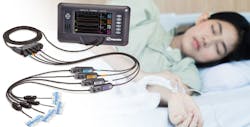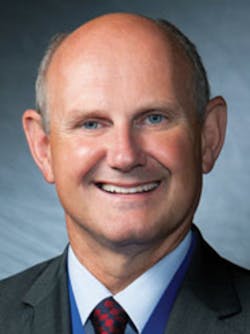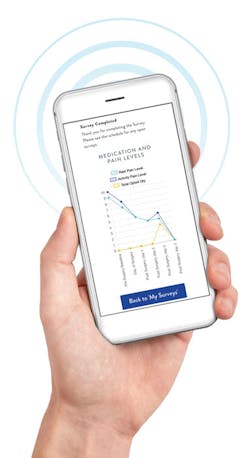It’s something out of a nightmare: a seemingly healthy person undergoes a successful surgery, is sent to the general care floor to recover where he/she receives opioids to ease the pain, settles in for the night to sleep and in the morning is found dead. A recent investigation by News 5 Cleveland entitled “Dead in Bed” documents stories of people who have lost loved ones to respiratory depression linked to post-operative opioids, including the mother of an 11 year-old-girl who died following an elective procedure.1
In this article, HPN takes a close look at the complications of post-operative pain management, why they occur and what healthcare providers can do to keep patients safe. We present insights from the Anesthesia Patient Safety Foundation (APSF), the Association for the Advancement of Medical Instrumentation (AAMI) Foundation, the Physician-Patient Alliance for Health & Safety (PPAHS), and others on this challenge and potential solutions.
1,000 too many
There are numerous organizations and individuals that have been working to combat adverse events and deaths linked to opioid-induced respiratory depression. These groups are comprised of multiple stakeholders, including anesthesiologists, surgeons, nurses, respiratory therapists, pharmacists and manufacturers. Some have been advocating for improved patient safety in this area for over a decade.
“We know there are over 1,000 people in the U.S. each year who experience a hypoxic event during the post-operative period,” said Anesthesia Patient Safety Foundation (APSF) President Mark A. Warner, MD. “These hypoxic events can lead to cardiac arrest, brain injury or even death. The patients have successful surgeries, receive post-operative pain medications, fall to sleep and, in a subset of instances, never wake up. The question is, ‘What can we do in the perioperative period to prevent this?’”
Physician-Patient Alliance for Health & Safety (PPAHS) board member Kenneth Rothfield, MD, Vice President, Chief Medical & Quality Officer, Saint Vincent’s Healthcare, Ascension Health, recounted the story of a 42-year-old former Navy engineer who died from opioid-induced respiratory depression following elective shoulder surgery. The patient’s widow tells her story in this Patient Safety Movement video on YouTube (https://youtu.be/dH9agqZRdXw).
“It was so tragic because this was not an elderly person at the end of life, or someone with a terrible illness — this was a healthy young guy who died unnecessarily,” said Rothfield. “He had a diagnosis of obstructive sleep apnea, as well as significant opioid sensitivity. Despite that history, he was given excessive doses of dilaudid post surgery in an unmonitored environment, and was later found dead in bed.”
In its August 8, 2012 Sentinel Event Alert, The Joint Commission addressed safe use of opioids in hospitals. It reported that out of the opioid-related adverse drug events — including deaths — that occurred in hospitals and were reported to its Sentinel Event database (2004-2011):
-
47 percent were wrong dose medication errors
-
29 percent were related to improper monitoring of the patient
-
11 percent were related to other factors, including excessive dosing, medication interactions and adverse drug reactions.2
In its March 14, 2014 memorandum, “Requirements for Hospital Medication Administration, Particularly Intravenous (IV) Medications and Post-Operative Care of Patients Receiving IV Opioids,” the Centers for Medicare and Medicaid Services (CMS) publically recognized the issue, stating:
“Each year, serious adverse events, including fatalities, associated with the use of IV opioid medications occur in hospitals. Opioid-induced respiratory depression has resulted in patient deaths that might have been prevented with appropriate risk assessment for adverse events as well as frequent monitoring of the patient’s respiration rate, oxygen and sedation levels. Hospital patients on IV opioids may be placed in units where vital signs and other monitoring typically is not performed as frequently as in post-anesthesia recovery or intensive care units, increasing the risk that patients may develop respiratory compromise that is not immediately recognized and treated.”3
“No hospital CFO would admit to having a line in his or her ledger that shows how much money is being set aside to deal with the consequences of preventable deaths,” said Rothfield. “But any organization that isn’t making investments in technology and training of frontline staff to address this issue has that line item in its ledger — it might be invisible, but it’s still there.”
Post-op pain management options
According to PPAHS board member Frank Overdyk, MSEE, MD, 53 percent of patients in hospitals receive intravenous opioids and half of that patient population also receives sedatives. He notes how a patient who is administered opioids has an almost twofold greater chance of suffering cardiac arrest during his/her hospital stay, and if that patient receives sedatives along with the opioids, his/her increased risk for cardiac arrest more than triples.4
In 2002, Overdyk was asked by a lawyer in Florida to consult on a case of a 34-year-old mother of two who died in the hospital following gallbladder surgery. By all appearances, it seemed the patient may have received an overdose of opioid pain medicine. After hearing that the lawyer had a file cabinet full of similar cases, Overdyk became a vocal advocate for investigating and preventing these types of deaths.
“This is a huge problem and the reason why we can’t precisely quantify it is because opioid deaths don’t leave a very clear trail,” said Overdyk. “In the U.S. about 200,000 patients suffer cardiac arrests in hospitals each year, and almost 70 percent risk suffering a hypoxic brain injury or death. Of those 200,000 cardiac arrests, about 80,000 happen on the ward. These include patients who have undergone elective surgeries and have few other medical problems. So what happened?”
Warner explains how the American Society of Anesthesiologists (ASA) and the APSF are working with the U.S. Food and Drug Administration (FDA) and pharmaceutical manufacturers to encourage the development of new opioid and non-opioid formulations that do not cause respiratory depression. These two organizations, as well as other anesthesia and surgical societies, also support the development of post-operative pain management strategies that reduce the use of opioids and the risk of opioid-induced respiratory depression after surgery.
“Through a multimodal medication technique, where we compliment opioids with other medications, we can treat pain with fewer and fewer opioids,” he says. “For example, instead of administering a large dose of morphine to a patient, a nurse could administer a much smaller dose along with non-opioid drugs to compliment the morphine. We can use regional nerve blocks to help reduce the overall level of pain so that there is less need for opioids.”
Some believe that pain management questions on the Hospital Consumer Assessment of Healthcare Providers and Systems (HCAHPS) survey have led to increased opioid use in hospitals. In a July 6, 2016 press release, the U.S. Health and Human Services (HHS) explained how “Many clinicians report feeling pressure to overprescribe opioids because scores on the HCAHPS survey pain management questions are tied to Medicare payments to hospitals.” In response, the CMS is proposing to remove HCAHPS survey pain management questions from the hospital payment scoring calculation.5
“Effective pain management begins pre-surgery,” said Roger Massengale, General Manager, Acute Pain, Halyard Health. “Providing comprehensive education for patients before they get to the hospital prepares them in advance with realistic expectations that contribute to a smooth discharge. Patient education on pain options, and how to better manage post-operative pain, helps minimize the risk of complications and readmissions from undermanaged pain.6,7
“Multimodal techniques for pain management, that include the use of nerve blocks in tandem with non-opioid post-operative pain pumps, can help reduce readmissions and lengths of stay after surgery,” he added. “Active patient engagement with the use of communicative monitoring tools provides an additional resource that enables doctors to address pain management issues in real time, avoiding unnecessary ER visits.”
Halyard Health’s ON-Q* TRAC is an online patient engagement platform developed to help physicians and hospitals provide better post-operative patient care by delivering real-time patient feedback. Patients are enrolled in the platform before surgery and are invited to provide information at various time intervals — from pre-operative through 90-days post-surgery — via a user-friendly survey that can be completed on either a desktop or mobile device. Based on this patient input, physicians are able to track patients’ pain levels and satisfaction with their treatment and care. Hospital administrators can use ON-Q TRAC’s aggregate dashboards to reduce readmissions by allowing them to detect and analyze data, identify trends and adjust protocols quickly to ensure consistent standards of care are met across procedures.
Continuous patient monitoring
Throughout the healthcare industry, individuals and organizations have voiced the need to continuously monitor post-surgical patients’ respiratory status on the general care floor, most commonly through pulse oximetry and/or capnography. While it is standard practice to perform spot checks of respiratory status at regular intervals in the post-operative period for patients deemed at low risk for respiratory depression, patients with undetected risk factors (e.g., sleep apnea, opioid sensitivity) or those that have been administered an excessive dose of opioids, could suffer a dangerous or deadly hypoxic event in between these checks.
The Association for the Advancement of Medical Instrumentation’s (AAMI) National Coalition to Promote Continuous Monitoring of Patients on Opioids, includes 17 organizations “committed to eliminating patient harm and death due to opioid-induced respiratory depression.” The foundation’s goal is to “educate and encourage hospitals to adopt continuous monitoring for all patients on parenteral opioids.”8
According to Marilyn Neder Flack, Executive Director, AAMI Foundation and Senior Vice President, Patient Safety Initiatives, AAMI, many healthcare organizations have not implemented continuous monitoring of all post-surgical patients because of a variety of factors. She states:
“People will say that there is no large scale, multi site, several million dollar clinical trial to show that continuous monitoring saves lives. But people who look at the literature and look at their own patient data say you don’t need a randomized trial because it is known that the current practice of evaluating the patients’ vitals signs at scheduled intervals still miss patients who are deteriorating. Unless you continuously monitor all post-surgical patients, you are not going to catch everyone. And how do you choose which patients might fall through the cracks?”
Neder Flack says some hospitals are starting to think about how they can implement continuous monitoring of all post-surgical patients but they don’t know which technology to use — pulse oximetry, capnography or another technology. Some of the issues include pulse oximetry sensors falling off patients’ fingers or low oxygen saturation (SPO2) being a late indicator of respiratory depression, especially if the patient is receiving supplemental oxygen. And while capnography that measures expired CO2 levels is a more sensitive measure of respiratory depression, enabling nurses to catch patients in respiratory distress sooner, patients complain that capnography sampling lines that fit on the nose are uncomfortable to wear or the data produced by the monitoring system can be confusing to the caregiver.
“We don’t tell hospitals which technology to use,” said Neder Flack. “If they use pulse oximetry they might save patients a little later, but they can still be saved. And if they choose to use capnography, then nurses should be trained, and given the time, to explain to patients that if they don’t wear the sampling lines then they could have a serious injury or death. Most hospitals currently have enough pulse oximeters to provide continuous monitoring right now so my message to them is — just do it.”
Overdyk has heard some hospitals say continuous monitoring on the general care floor is simply too expensive. His response to them is:
“Right now, a leading academic hospital spends approximately $22 per patient for continuous pulse oximetry monitoring. Is that too much of a cost to ensure patients walk out of the hospital alive? Furthermore, if every hospital in the U.S. decided to implement continuous pulse oximetry monitoring tomorrow, the volume of business would be such that it would drive down that price even further.”
Warner notes how the APSF is working with medical device manufacturers to encourage their development of multi-parameter monitors that will measure not only oxygen saturation but also other quantitative measures of respiration.
“We’d like to know if a patient is breathing fast enough and deep enough,” said Warner. “And we’d love to know a patient’s carbon dioxide level because if that goes up, we definitely know there is a problem.”
According to Brian Kane, Product Marketing Manager at Nonin Medical, the SenSmart Model X-100 Universal Oximetry System is the first system to deliver both pulse and regional oximetry measurements and is designed to accommodate more parameters in the future. It provides a side-by-side view of cerebral oximetry (rSO2), pulse oximetry (SpO2) and pulse rate values for real-time decision-making.
“Hospitals can keep patients safe and more comfortable by noninvasively monitoring their cerebral tissue oxygen saturation during and after cardiac surgery,” said Kane. “For instance, Nonin’s SenSmart rSO2/SpO2 Oxygenation System can be used for spot-checking or continuous monitoring of neonatal, pediatric and adult patients in a variety of environments, such as the emergency room, operating room or surgical recovery area. Avoiding the frequency and duration of cerebral desaturations has also been proven to reduce the incidence of stroke and post-op cognitive dysfunction9, as well as decrease the patient’s length of stay.”10
The challenge of alarm fatigue
One of The Joint Commission’s 2017 Hospital National Patient Safety Goals is to “Make improvements to ensure that alarms on medical equipment are heard and responded to on time.”11 When questioned about alarm fatigue related to continuous patient monitoring, Neder Flack says the AAMI Foundation is in its third year of helping hospitals tackle this challenge. She explains that when monitoring post-surgical patients who appear to be at low risk for opioid-induced respiratory depression, hospitals do not need to set the alarm parameters as high as they would for critically ill patients in the intensive care unit (ICU).
“There is no excuse anymore because we know how to reduce many non-actionable alarms,” said Neder Flack. “It’s hard work that involves some alarm data analysis to determine which alarms should be targeted first, determining new parameter settings that will reduce non-actionable alarms but still inform the clinician when a true actionable event is occurring, piloting the changes, rolling out the changes, establishing policies and protocols for when and by whom settings may be changed, and educating nurses when and how to customize the new alarm default further for specific patients. It is no small task but we know how to do it, and it must be done for patient and caregiver safety. So, for those healthy post-op patients on parenteral opioids, set your continuous monitoring technology alarm parameters so they go off only when those patients are really in danger. We have examples on our website of hospitals that have successfully achieved this. It can be done.”
“Hospitals will say that continuous pulse oximetry monitoring doesn’t fit into their nursing workflows because of a high false alarm rate,” said Overdyk. “And yes, if you set your alarms like you did back in 1989, then you will get a lot of false positives so you need to be smart about how you set them. We have published data from many healthcare facilities that use continuous monitoring and they have managed the workflow and the false alarm issues. There is a trade off between sensitivity and specificity of an alarm — you want to make sure you don’t have too many false positives but you can’t afford any false negatives. Providers will agree it is not unreasonable to have three-to-five false alarms per shift per patient if that is what it takes to prevent finding someone dead in bed.”
The human factor: clinical collaboration
While new pain management techniques and technology can go a long way in improving post-operative patient safety, the human factor is equally — if not more — important. In 2011, Warner and others launched an initiative to establish the perioperative version of the “Medical Home,” as defined by the Agency for Healthcare Research and Quality (AHRQ).12 The APSF defined this “Perioperative Surgical Home” as “a patient-centered, systematically-designed care pathway of the entire perioperative continuum.”
“When patients come for surgery, all of those individuals involved with their care — surgeons, nurses, anesthesiologists, other anesthesia professionals, pharmacists, respiratory therapists and others — get involved at different times and in different ways. All providers have their own different responsibilities to that continuum of care,” said Warner. “Currently no one coordinates patient care throughout the entire perioperative period. We established the Perioperative Surgical Home as a way for all of us involved in any patient’s perioperative experience to work together systematically for improved care and safety.”
Warner explains how in the concept of the Perioperative Surgical Home, one person (e.g., the anesthesiologist, surgeon, nurse, hospitalist, or other leader) is chosen to coordinate all of those involved in a patient’s care throughout the perioperative period so that they can collectively provide a standardized, safe and satisfactory experience. Through this approach, healthcare providers can avoid lapses in care (e.g., failure to administer a medication or test) and medical mistakes (e.g., drug overdoses). This allows for better monitoring of patients to minimize their risks for adverse events such as hypoxia, thromboembolism and pulmonary embolism.
“We believe that’s where the bang for the buck is — if you are going to put your money to where you are going to improve perioperative safety, it is in developing multidisciplinary teams and standardized processes across the surgical continuum of care so that things don’t get dropped,” said Warner. “If I am the patient, I want to make sure everybody taking care of me the entire time is focused on my safety and the success of the surgical episode of care.”
References:
-
www.newsnet5.com/longform/dead-in-bed-a-deadly-hospital-secret.
-
www.jointcommission.org/assets/1/18/SEA_49_opioids_8_2_12_final.pdf.
-
Overdyk FJ, Dowling O, Marino J, Qiu J, Chien H-L, Erslon M, et al. (2016) Association of Opioids and Sedatives with Increased Risk of In- Hospital Cardiopulmonary Arrest from an Administrative Database. PLoS ONE 11(2): e0150214. doi:10.1371/journal.pone.0150214.
-
White JA. Improving patient satisfaction after primary total knee arthroplasty Using nurse practitioner-driven preoperative education [Doctoral Theses]. Westerville (OH): Otterbein University; 2015.
-
Forastiere E, Sofra M, Giannarelli D, Fabrizi L, Simone G. Effectiveness of continuous wound infusion of 0.5% ropivacaine by ON-Q pain relief system for postoperative pain management after open nephrectomy. Br J Anaesth. 2008;101(6):841-847.
-
Pohl A, Cullen DJ. Cerebral ischemia during shoulder surgery in the upright position: a case series. J Clin Anesth. 2005;17:463-9.
-
Casati, et al. Monitoring cerebral oxygen saturation in elderly patients undergoing general abdominal surgery: a prospective cohort study. Eur J Anes 2006;24:59-65.
-
https://www.jointcommission.org/assets/1/6/2017_NPSG_HAP_ER.pdf.
About the Author
Kara Nadeau
Senior Contributing Editor
Kara Nadeau is Sterile Processing Editor for Healthcare Purchasing News.






